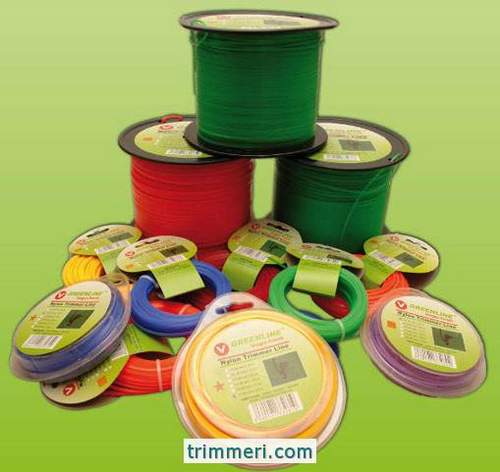The trimmer is a truly correct solution for mowing grass in places that are difficult to access for a wheeled mower, in particular around trees, shrubs, along fences and paths. The performance of the unit depends on the correct choice of fishing line for the trimmer. Flexibility, rigidity and non-breaking are required from cutting tools. It must have a high level of wear resistance and be tear resistant.. What should you pay attention to first when choosing a trimmer line?

Firstly, the thickness of the thread. In the individual operating instructions for the trimmer, you can find out the required diameter of the fishing line. It is important to note that you do not need to focus only on the inscription on the bobbin of a lawn mower, since the set of trimmers, as a rule, includes universal spools suitable for woods of different diameters and engines of different powers. For each model of trimmer, let us have your own individual diameter of the fishing line. So, when installing a fishing line, the diameter of which exceeds the limit value indicated in the instruction manual, the rotation resistance increases, the load on the engine increases, which inevitably leads to overheating and breakdown. Of course, using a fishing line of a smaller diameter will not lead to engine damage, but it will significantly increase its wear. Currently, the most common thread with a diameter of 1.2 mm to 4 mm. Variation in fishing line diameter depends on engine power. For example, for electric or cordless trimmers, which are characterized by low power, a fishing line with a diameter of 1.3. 1.6 mm is suitable. For stronger electric or gasoline trimmers that can mow any grass vegetation, a thread with a diameter of 1.8. 2 mm is suitable. Professional petrol and electric scythes use a thread 2.5. 4 mm thick. Such a fishing line will be enough to clean the area from a small shrub.
Video: How to Choose a Fishing Line For a Trimmer
Secondly, on the shape of the section. In most cases, a round-section trimmer line is enough. it is the most common and affordable. The main disadvantage of fishing line of this section is the high noise level produced by the trimmer during operation. But here, modern technology does not stand still. line manufacturers were able to reduce noise with a spiral line. Also, there are star-shaped, rectangular or square varieties of sections. Such sections have sharp edges, which makes the grass cut more even. The shape of the fiber increases the productivity of the technique. However, at the same time, the consumption of fishing line increases, and when using such a thread, feeding problems from the reel often arise. For the best mowing of the grass, there are options with notches and teeth. Notched fishing line is designed for mowing weeds and hard vegetation. The main disadvantage of such fishing line is the poor removability from semi-automatic spools, so it uses disks in which it is inserted in small pieces. A two-component round fishing line is more tear resistant and is most suitable for dry and hard grass.
Thirdly, the service life directly depends on the composition of the fishing line. Most often, the trimmer line is made of nylon. This thread has a high degree of wear resistance, and also provides efficient operation at elevated temperatures and loads. In addition, at low temperatures it does not lose its qualities, and does not delaminate during long-term storage.
The main advantage in favor of choosing a fishing line, and not another cutting tool, is the ability to use it to conduct delicate trimming of vegetation, for example, near young trees or small bushes.